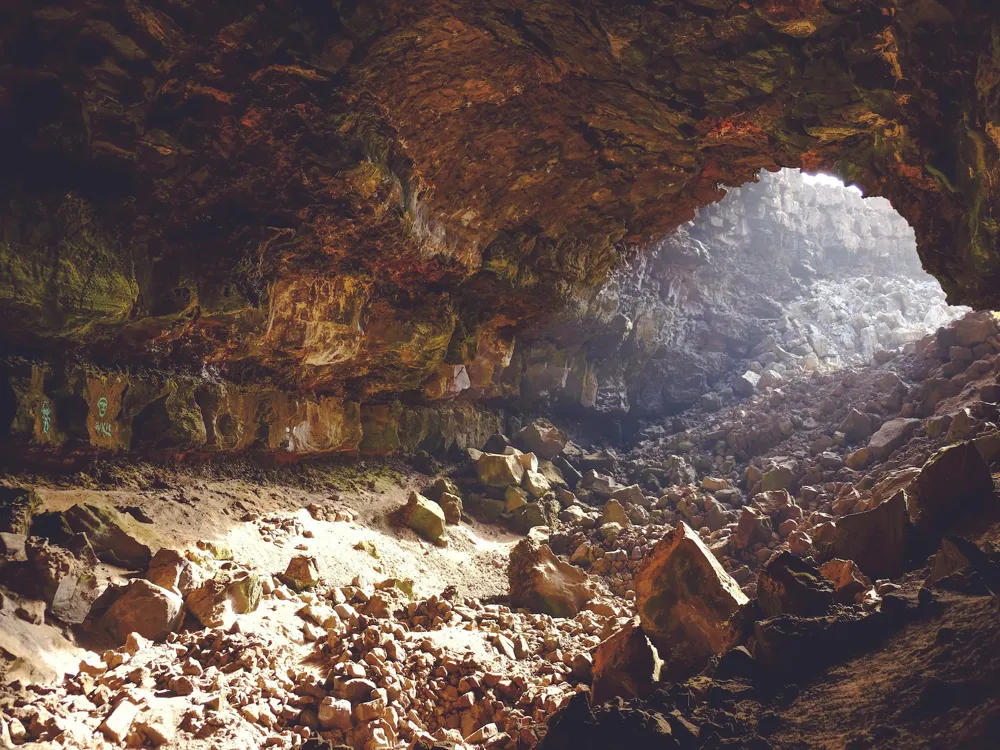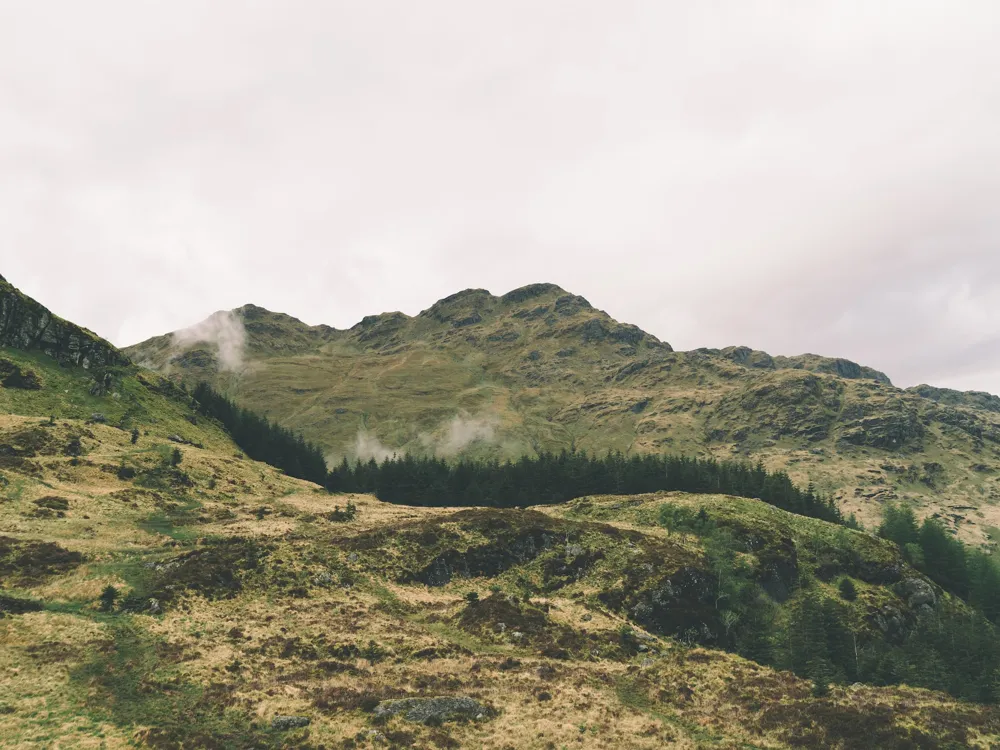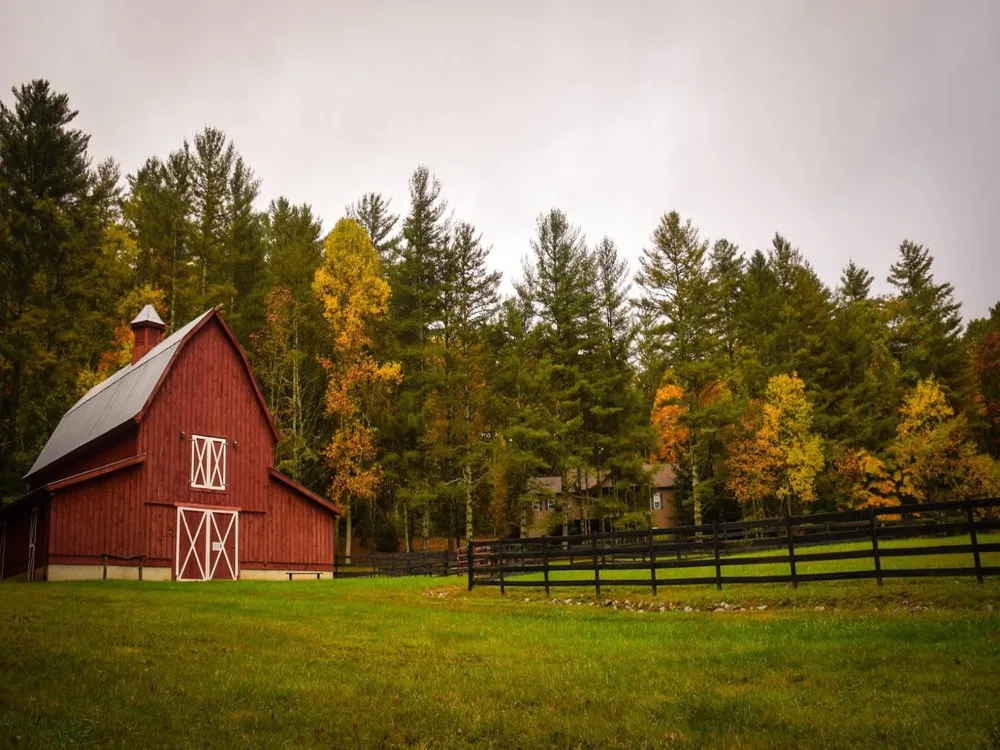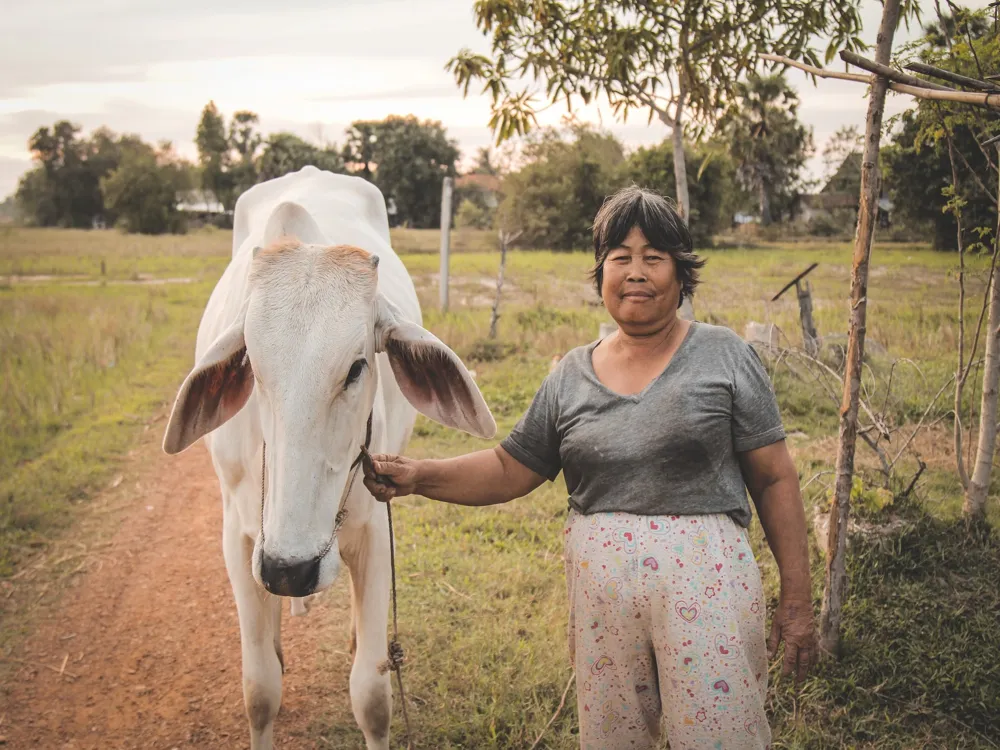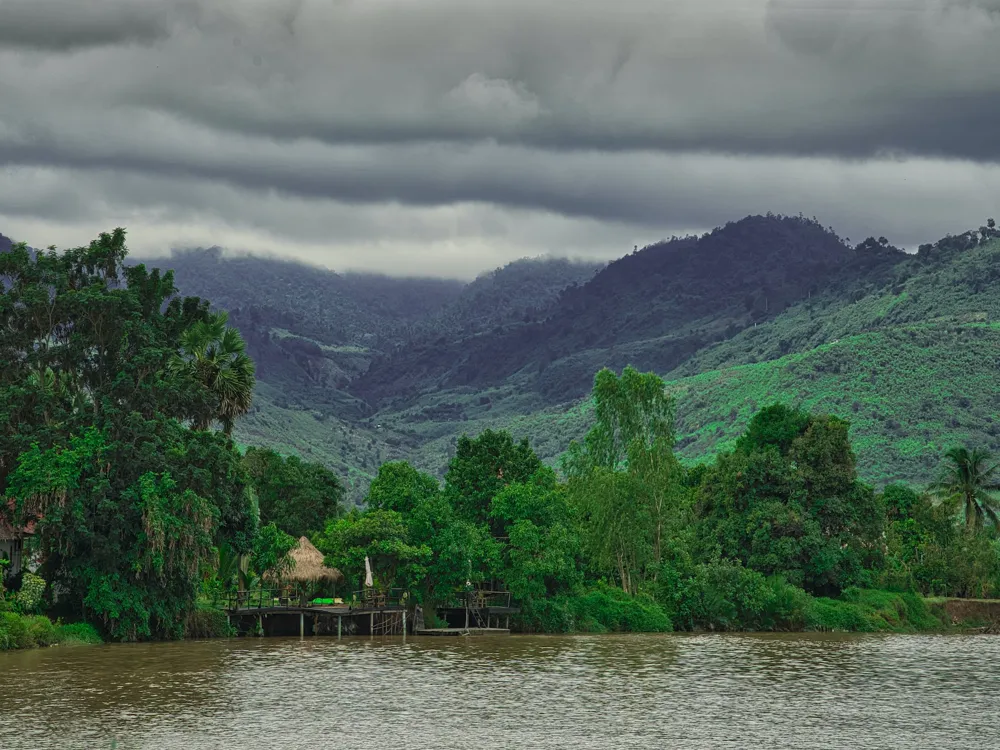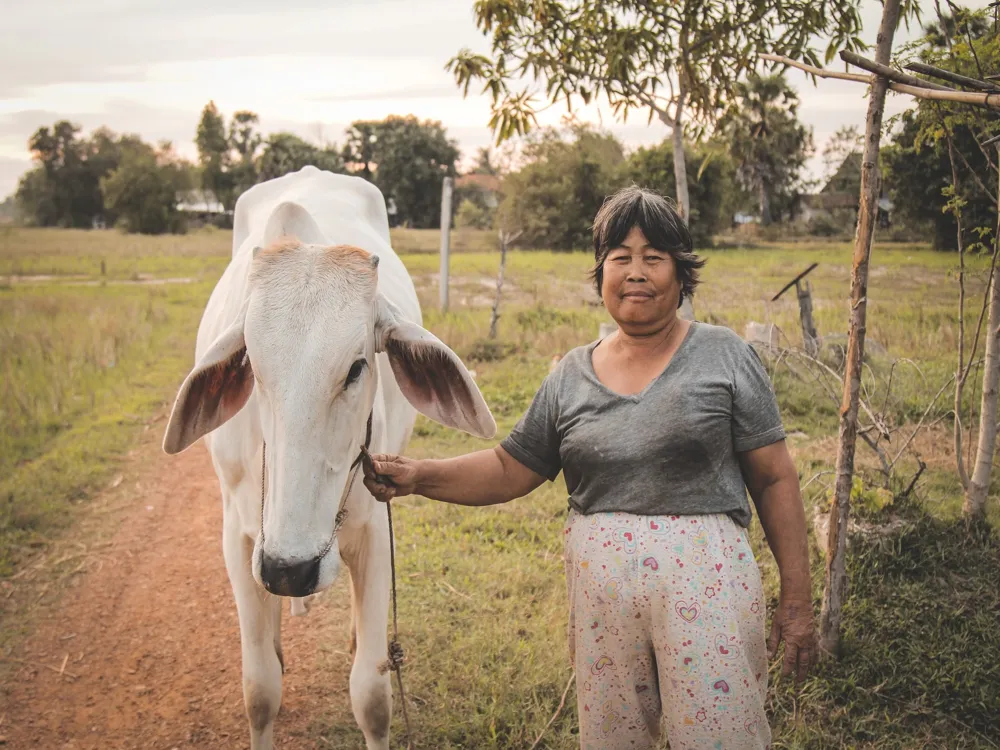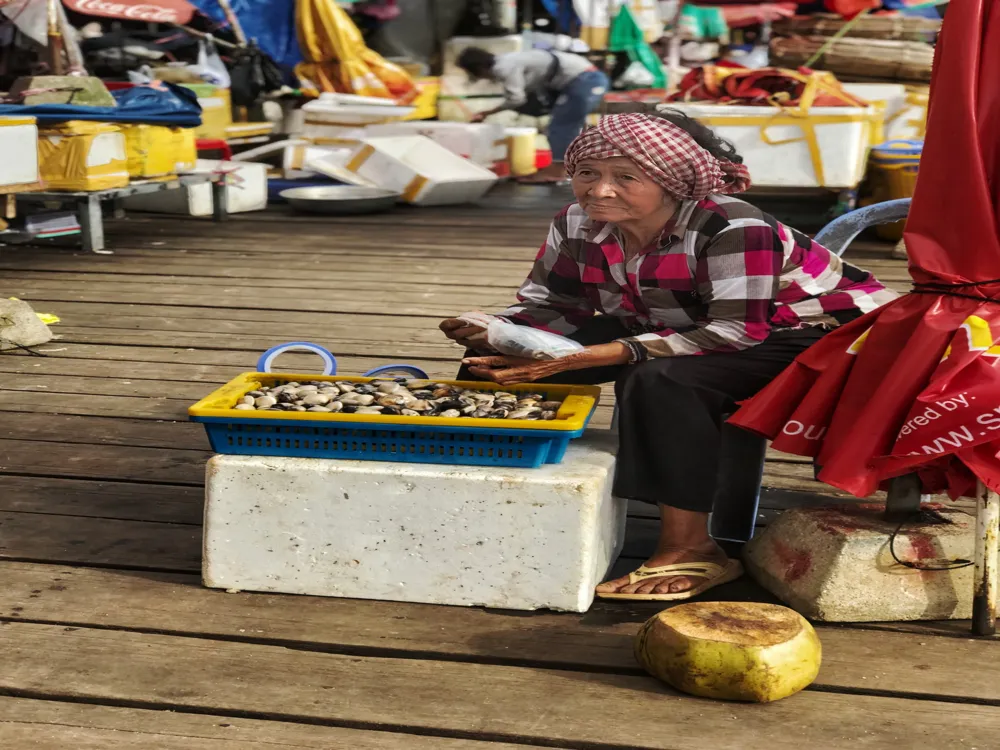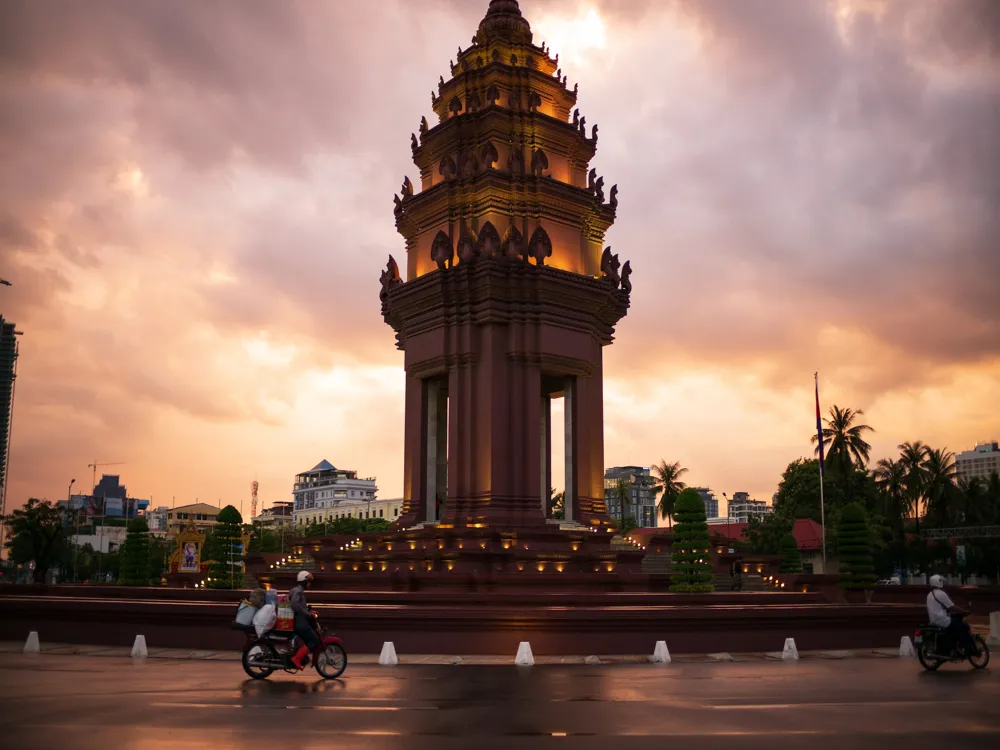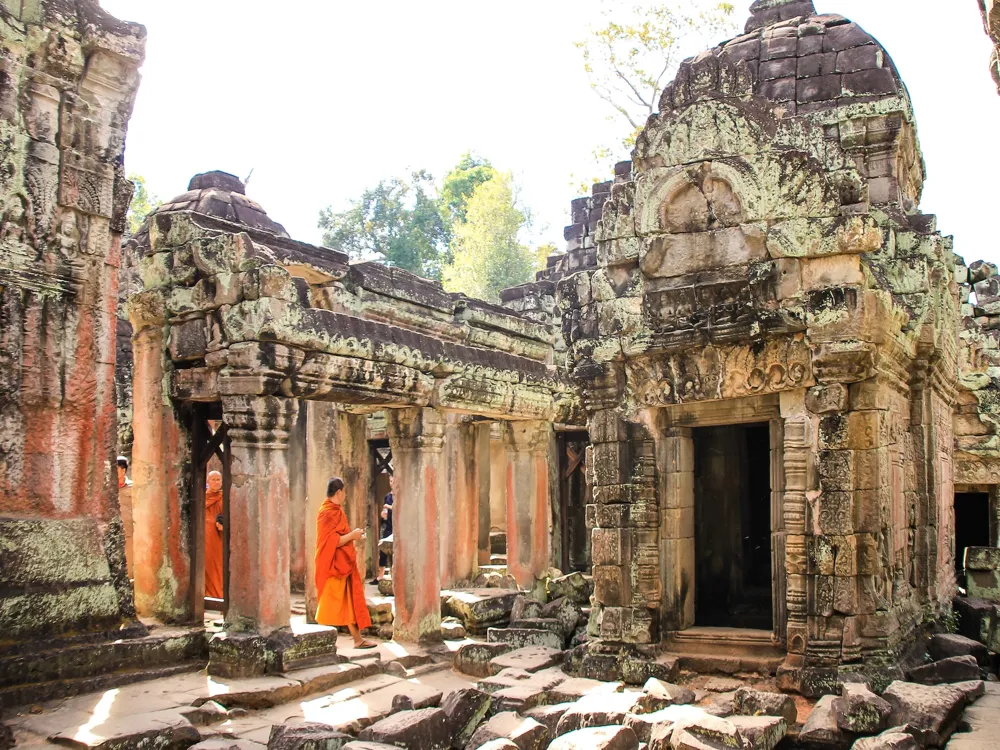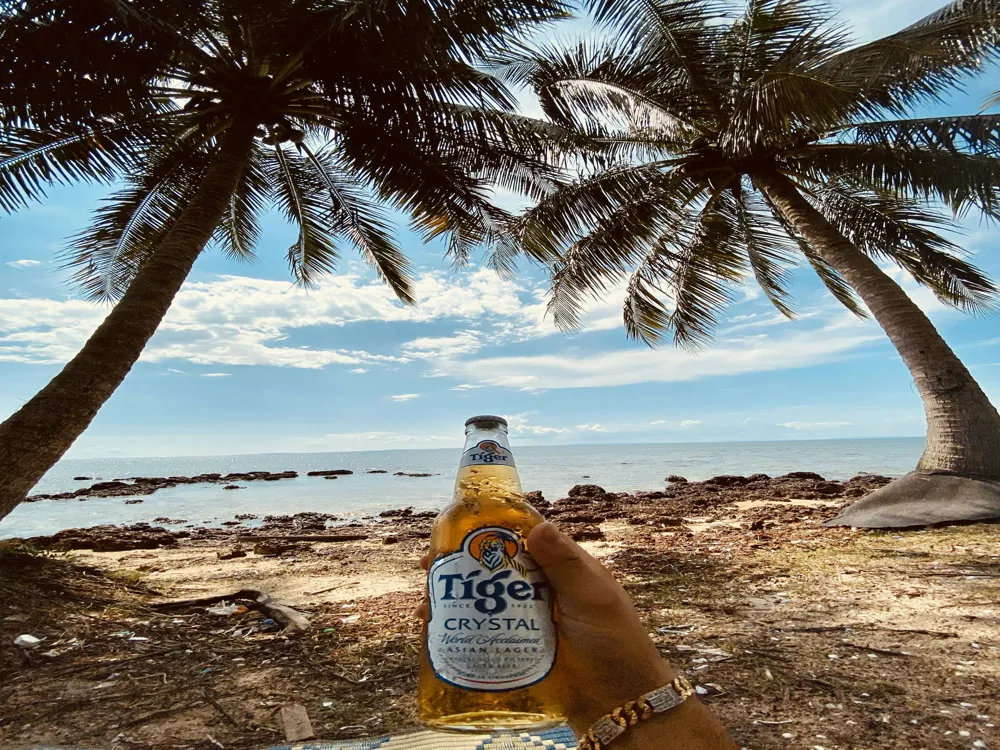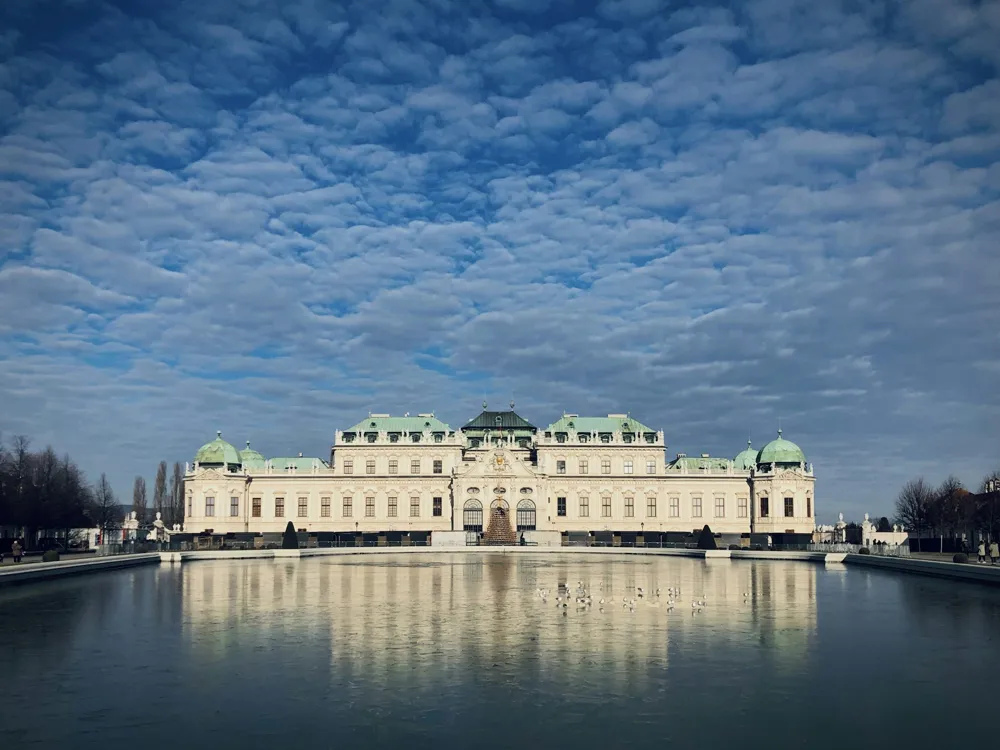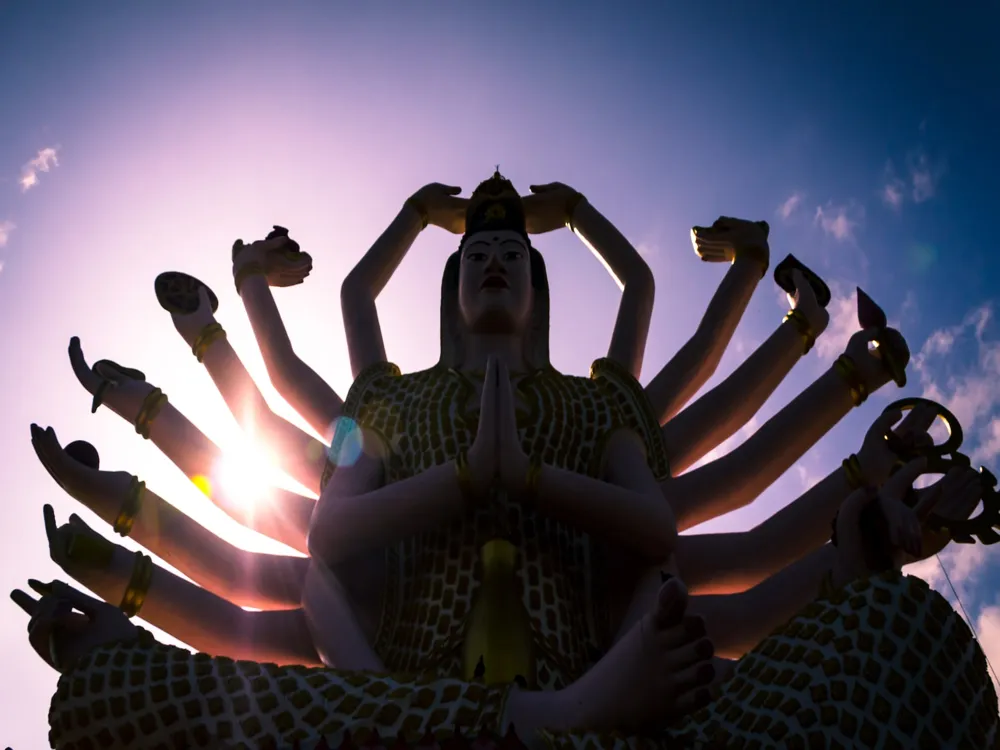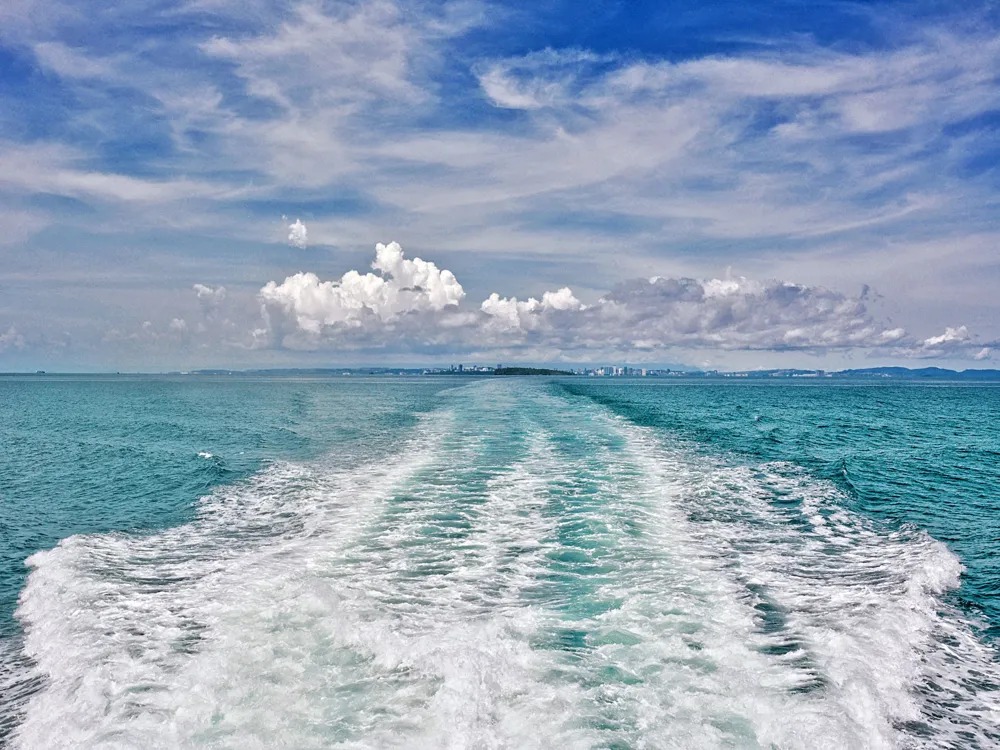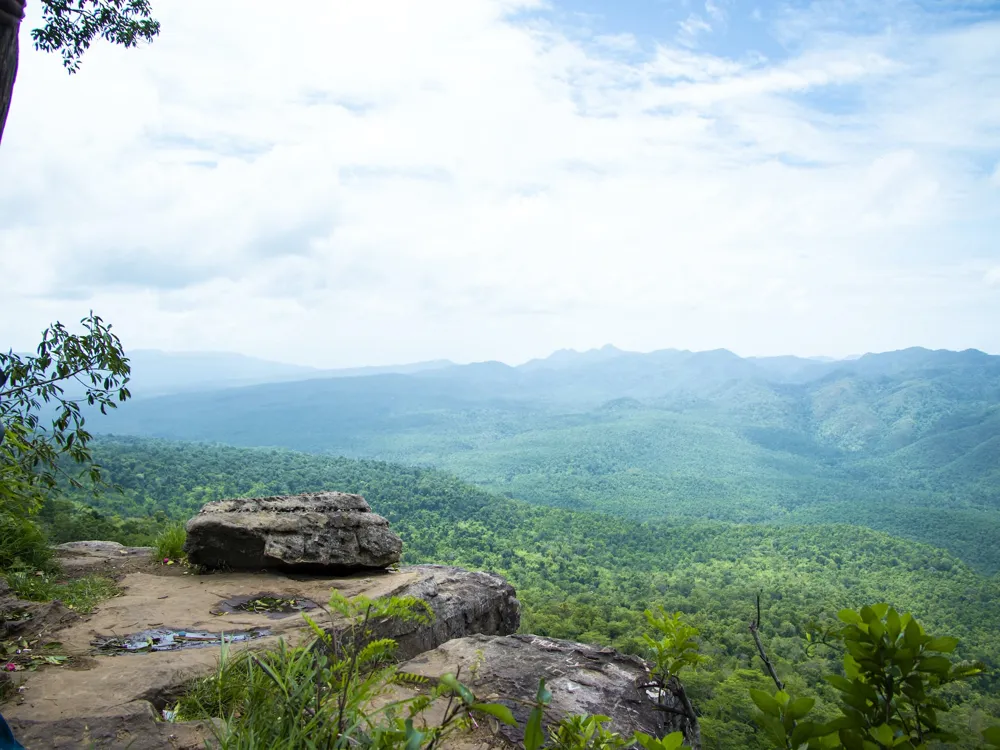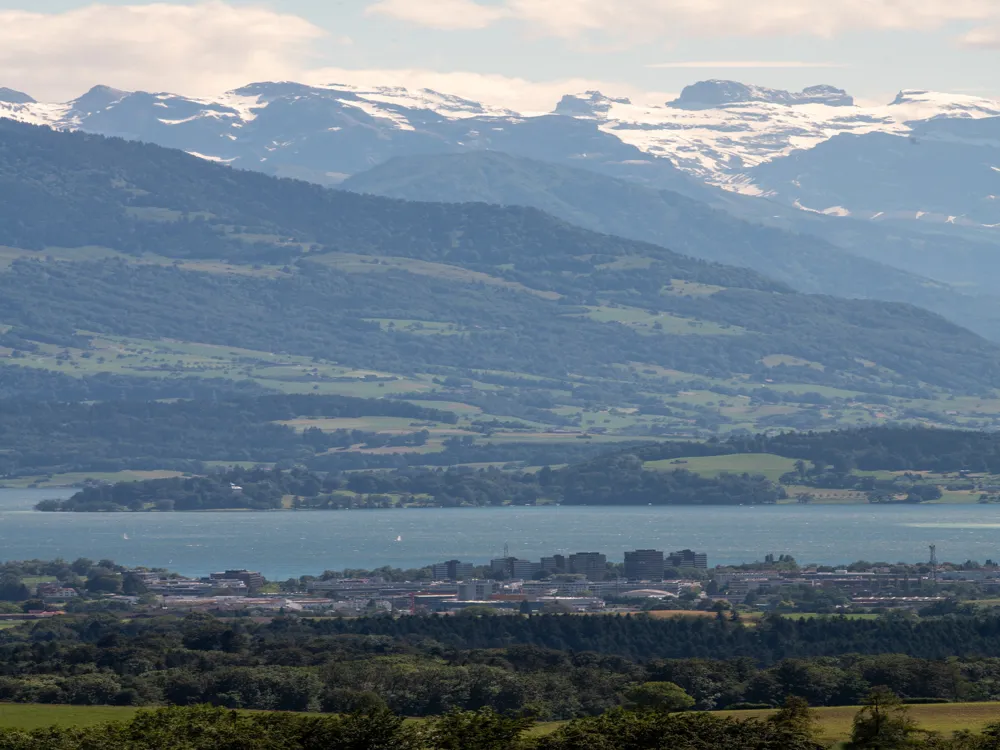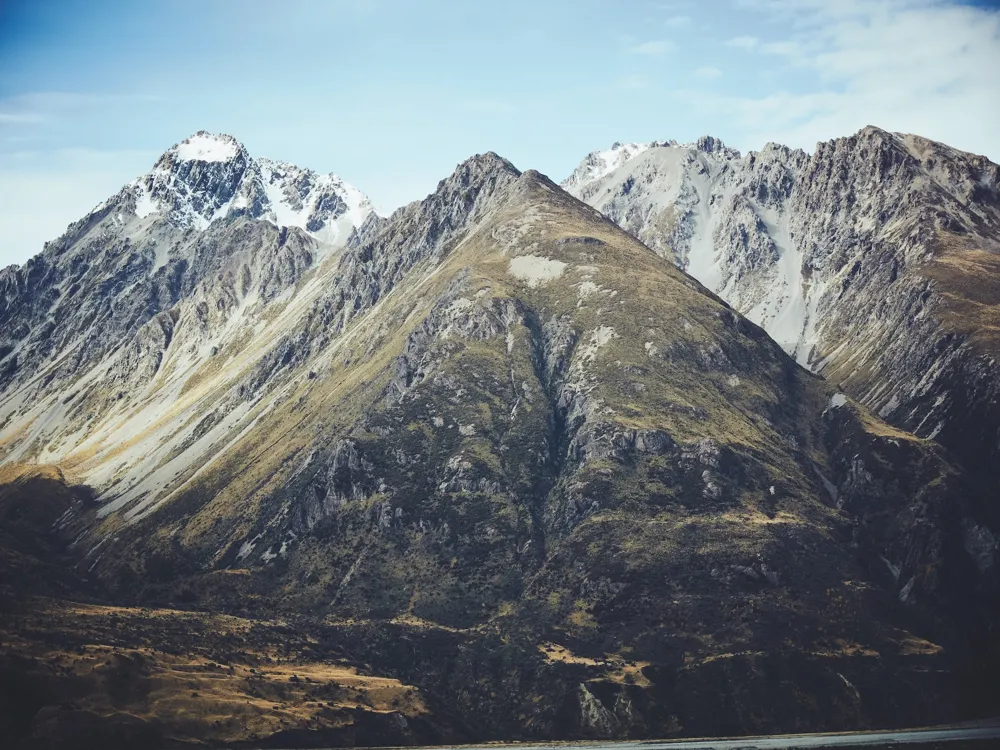Popokvil Waterfall, a breathtaking natural wonder, is nestled in the verdant landscapes of Kampot, Cambodia. This magnificent cascade is renowned for its ethereal beauty and serene ambiance, making it a must-visit destination for nature enthusiasts and travelers alike. The name 'Popokvil' translates to 'swirling clouds,' aptly describing the misty spray that envelops the falls during the monsoon season. The waterfall is a two-tiered marvel, with waters plunging over limestone cliffs into tranquil pools below. Surrounded by lush forests, it's part of the Bokor National Park, a haven for diverse flora and fauna. The journey to Popokvil Waterfall is as enchanting as the destination itself, with winding paths through dense jungle and the chance to spot rare wildlife. Visitors to Popokvil Waterfall are greeted with a spectacle of nature's prowess. During the wet season, the falls are at their most majestic, with copious amounts of water cascading down the rocky terrains, creating a thunderous roar that resonates through the forest. In contrast, the dry season offers a more subdued experience, where the gentler flow allows for exploration of the rock formations and natural pools. The area around Popokvil Waterfall has a mystical quality, often shrouded in mist and echoing with the sounds of the jungle. It's a place where one can truly connect with nature and experience the untouched beauty of Cambodia's landscapes. The waterfall also holds cultural significance for the local community, often associated with traditional legends and folklore. For those keen on photography or seeking a tranquil spot for reflection, Popokvil Waterfall provides a perfect backdrop. Its ever-changing face, dictated by the seasons, ensures that each visit offers a unique experience. Whether basking in the spray of the falls, exploring the surrounding jungle, or simply enjoying the panoramic views, Popokvil Waterfall promises an unforgettable experience in the heart of Kampot's natural beauty. The term 'architecture' when applied to Popokvil Waterfall, refers not to man-made structures, but to the natural geological formations that comprise this stunning natural feature. The waterfall's 'architecture' is a result of millennia of geological processes, sculpting the landscape into its current form. The primary structure of Popokvil Waterfall is its two-tiered cascades. Over thousands of years, water has eroded the limestone rocks, creating the distinct levels of the falls. The upper tier is characterized by a broad, semi-circular crest, where water spills over in a wide curtain. The lower tier, more rugged and uneven, sees water tumbling over a series of steps and ledges, creating a dynamic and ever-changing display. The limestone composition of the cliffs around Popokvil Waterfall is a key aspect of its natural architecture. This sedimentary rock, formed from the skeletal remains of marine organisms, is known for its durability and the unique formations it can create. Over time, the limestone at Popokvil has been eroded by the acidic properties of rainwater, leading to the creation of fascinating karst landscapes, including caves and underground streams, surrounding the waterfall. Surrounding the cascades, the dense jungle adds to the waterfall's natural architecture. The flora, consisting of a mix of indigenous trees and plants, frames the falls and provides a vibrant green backdrop. The interplay between the rock formations and the verdant jungle creates a harmonious balance, illustrating the beauty of untouched nature. The pools at the base of Popokvil Waterfall are another significant architectural element. These natural pools, formed by the constant flow of water, provide a tranquil spot for visitors to relax and enjoy the serene environment. The clear waters, surrounded by smooth stones and pebbles, offer a refreshing respite from the tropical heat. Popokvil Waterfall's architecture is a testament to the beauty and complexity of natural geological processes. It stands as a majestic and awe-inspiring example of how water and rock can interact over time to create a landscape of unparalleled beauty. Each aspect of the waterfall, from the towering cliffs to the serene pools, contributes to a holistic natural masterpiece, offering visitors a glimpse into the artistry of the natural world. The ideal time to visit Popokvil Waterfall is during the monsoon season, from May to October when the water levels are high, and the falls are most spectacular. However, for those who prefer a quieter and more serene experience, the dry season, from November to April, offers easier access and the opportunity to explore the rock formations up close. While Popokvil Waterfall is a natural wonder, safety should be a top priority. Visitors are advised to stay on marked trails, avoid climbing on slippery rocks, and always supervise children. During the rainy season, the paths can be muddy and slippery, so appropriate footwear is essential. As part of Bokor National Park, Popokvil Waterfall is a protected area. Visitors are encouraged to respect the environment by not littering, disturbing wildlife, or removing any natural objects. Keeping the area pristine ensures its beauty and biodiversity for future generations. For photography enthusiasts, Popokvil Waterfall offers a myriad of opportunities. Early morning or late afternoon light provides the best conditions for capturing the falls. A tripod can be useful for long-exposure shots to get that silky water effect. Don't forget to protect your camera equipment from the mist and rain. Popokvil Waterfall is accessible from Kampot town. The journey typically involves a drive up the winding roads of Bokor Mountain, taking approximately 1 to 2 hours. Visitors can opt for a taxi, or motorbike rental, or join a guided tour from Kampot. It's important to note that road conditions can vary, particularly during the rainy season, so choosing a suitable mode of transportation is crucial. Upon reaching Bokor National Park, a short hike through the jungle leads you to the waterfall. The path is well-marked, but hiring a local guide can enhance the experience with insights into the area's ecology and history. Read More: Overview of Popokvil Waterfall in Kampot
The architecture of Popokvil Waterfall
Tips When Visiting Popokvil Waterfall
Best Time to Visit
Safety Precautions
Environmental Responsibility
Photography Tips
How To Reach Popokvil Waterfall
Popokvil Waterfall
Kampot
NaN onwards
View kampot Packages
Weather :
Tags : Waterfall
Timings : 8 AM to 9 PM
Time Required : 2 hours
Planning a Trip? Ask Your Question
Kampot Travel Packages
View All Packages For Kampot
Top Hotel Collections for Kampot

Private Pool

Luxury Hotels

5-Star Hotels

Pet Friendly
Top Hotels Near Kampot
Other Top Ranking Places In Kampot
View All Places To Visit In kampot
View kampot Packages
Weather :
Tags : Waterfall
Timings : 8 AM to 9 PM
Time Required : 2 hours
Planning a Trip? Ask Your Question
Kampot Travel Packages
View All Packages For Kampot
Top Hotel Collections for Kampot

Private Pool

Luxury Hotels

5-Star Hotels

Pet Friendly







